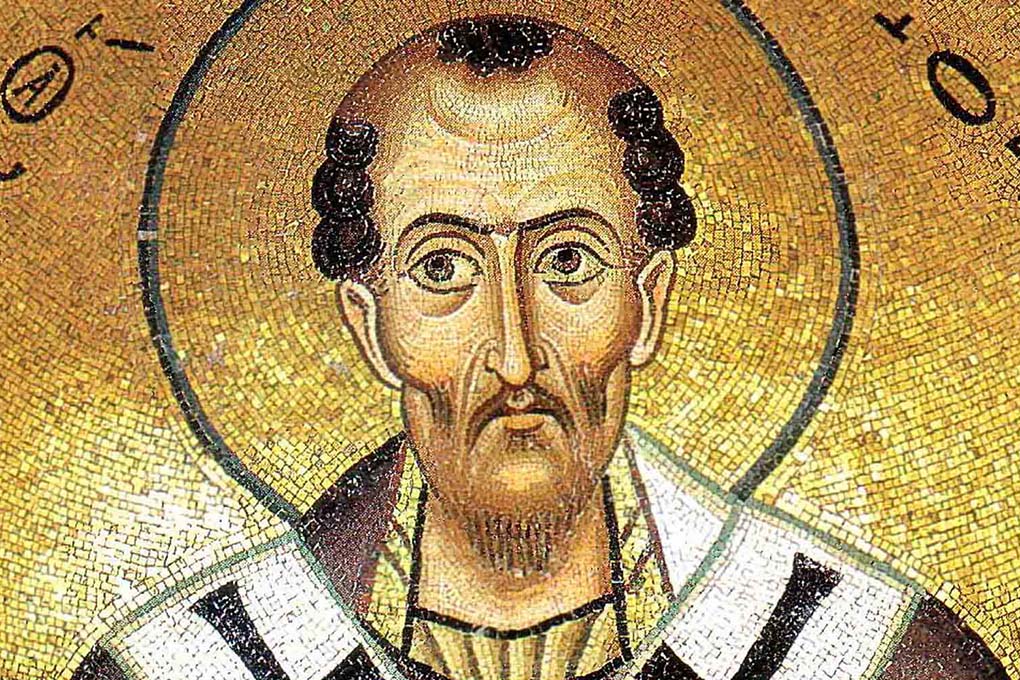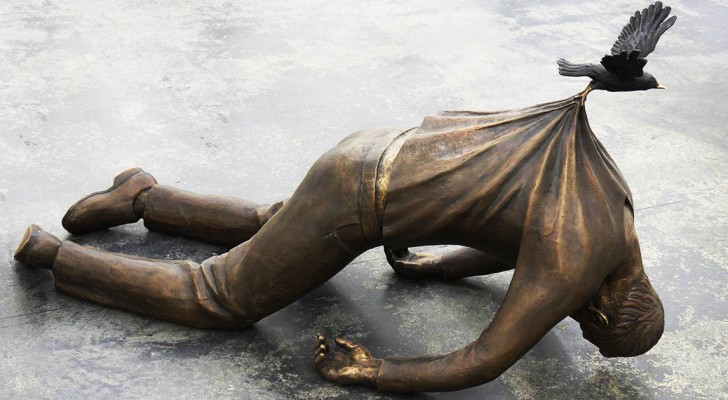
by Dr. Christopher Sheklian
This Thursday, the Armenian Apostolic Church commemorates St. John Chrysostom, one of the most important sources of Christian thought and theology in all of Christendom. Chrysostom was born in Antioch, which we discussed last week as a place with a lasting impact on Christianity. In fact, it was there in Antioch, according to the Book of Acts, that Christians were first called Christians. If Antioch is an important source for Christianity, St. John Chrysostom is the most revered products of that source, himself an enduring source of inspiration and scholarship for Christianity, including Armenian Christianity.
Born in Antioch in 349, Chrysostom initially studied classical Greek rhetoric with Libanius, a famous teacher in the city. In so doing, he started down a path that he travelled along with several other important Christian thinkers of the fourth and fifth centuries, one that moved between nascent Christian thinking and the world of classical Greek philosophy and scholarship. Like his slightly younger contemporary further West, St. Augustine of Hippo, Chrysostom put the tools of rhetoric in the service of the message of the Gospel, preaching with the eloquence that earned him his sobriquet Chrysostom, meaning “Goldenmouthed,” in Armenian Voskeperan. Using the tools of classical rhetoric and philosophy, even though St. Paul had done so to some extent in his epistles, remained controversial. While St. Augustine mounted an explicit defense of the use of rhetoric (in his Confessions as well as elsewhere) and while the so-called “Cappadocian Fathers” like the brothers St. Basil the Great and Gregory of Nyssa mobilized elements of Stoic philosophy, Chrysostom demonstrated the use to which classical rhetoric could be put through the brilliant, inspired, and compelling preaching that earned him his nickname. In Armenia, we can see a similar trend in the model of Greek history writing for early Armenian histories, and in the philosophical apologetic tract of Eznik.
After his education in classical rhetoric with Libanius, he became more deeply engaged with his Christian faith, and studied with Diodore of Tarsus, the famed head of the Christian theological school of Antioch who we mentioned last week. He entered into a period of rigorous ascetic practice before being ordained a deacon in 381. Eventually, in 386, he was ordained a presbyter (a priest) by Evagrius. This was a tumultuous time in the history of the Church, and Chrysostom was near the center of the controversies—the bishop Evagrius, who ordained him, was the successor to Paulinus, one of two claimants to be the bishop of Antioch. The controversy surrounding Arius has created divisions within the Church that reverberated for years, creating tension between the important sees of Antioch, Alexandria, and Rome. Chrysostom first gained his reputation for brilliant preaching in Antioch. In 397, he was appointed to be the Archbishop of Constantinople, the seat of the Byzantine Empire and one of the most important sees of the Christian Church at the time. In Constantinople, he continued to earn his reputation as “Golden-mouthed.” Controversy continued to follow him, as imperial intrigue and doctrinal disputes raged in the imperial capitol. He died in exile in 407.
St. John Chrysostom, through his preaching and other writings, exerted a major influence on subsequent Christian thinkers. Many of his works were translated into Armenian very early after the creation of the alphabet. Through these works, Chrysostom was a major source for Armenian theological development. His homilies, the sermons that earned him his reputation and nickname, were very influential. Many of those homilies were exegetical, that is, they offered interpretations of Scripture. Given as a sequence or series of sermons, his homilies on Genesis, the Psalms, and the Gospel of Matthew became authoritative interpretations. Though grounded in the literal reading of the Bible characteristic of the School of Antioch from which he hailed, he developed his own style of exegesis that has been the source of inspiration for later exegetes, interpreters of Scripture. For Armenian writers, his exegetical homilies on the Gospel of Matthew were especially influential. No Armenian theologian would dare to write a commentary of the Gospel of Matthew without a thorough command of St. John Chrysostom’s work.
Chrysostom’s work was translated early into Armenian. This first burst of translation is often referred to as the Golden Age of Armenian literature. The first translations were characterized by the emphasis on the sentence, trying to render the concepts and meanings into Armenian. Later translations of Chrysostom were also made, including the translation of Chrysostom’s commentaries on Luke and John. These were made in the twelfth and thirteenth centuries, during the height of the Cilician Armenian Kingdom. This era is often called the Silver Age of Armenian literature. Between these two moments in Armenian literary history falls what is called the Hellenizing School. This group of translators, working in the sixth and seventh century, tried to translate word for word from Greek texts, as opposed to earlier translators who had taken the sentence as the basis for translation. The Hellenizing School, according to Dr. Abraham Terian, also followed the Greek syntax, the order of the Greek sentence, in their translations. Considered and reconsidered over the years, this Hellenizing School is contrasted against the earlier translators, often with disapproval. More recent scholarship, such as that by Dr. Terian, has given a more nuanced view of this school of translation. He identifies four separate groups or tendencies, each of which had a slightly different approach. Other classical Greek rhetorical and philosophical texts were translated during this period. The reputation of St. John Chrysostom, though, was already set. A lasting source of theological thought, styles for homilies, and modes of interpreting Scripture, St. John Chrysostom has exerted a profound and lasting influence on Armenian theological writing.
Don’t forget to check out the Zohrab Information Center’s Instagram @zohrabcenter for pictures of relics of St. John Chrysostom in Istanbul.

